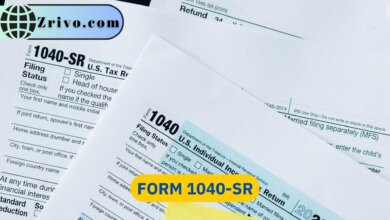What is a Partnership?
A partnership is an arrangement between two or more parties to oversee business operations and share profits and liabilities

A business partnership is a legal entity in which two or more people or entities invest money and share profits and losses. It’s an easy and inexpensive way to form a business and is regulated mostly by state law. However, it’s not without its risks. All partners are liable for the company’s debts and obligations. They can also be personally liable if they take part in management or have the power to bind the partnership.
Several types of partnerships exist, including general partnerships, limited liability partnerships, and LLPs. Each type has different tax benefits and liabilities. Partnerships are a popular choice for businesses that involve labor, capital, and expertise. They are typically easier to set up than LLCs or corporations and don’t require a formal incorporation process. Partnerships also have the added benefit of being less expensive to run than companies.
A successful partnership will have clear rules dictating how decisions will be made, what percentage of ownership each partner has, and how earnings and losses will be shared. It will also establish a procedure for what should happen if a partner becomes ill, dies, or wants to leave the business. It is advisable to have a written partnership agreement in place to prevent conflict in the future.
Some partners will take on a greater amount of risk than others. This can be especially true in a general partnership, where all partners have joint and several liability for the company’s actions. In limited liability partnerships, however, each partner is only liable for his or her contribution to the business, and the partners are shielded from one another’s legal and financial mistakes. This type of partnership is a good option for professional services such as law, accounting, consulting, finance, and investing.

How Do Partnerships Work?
If you choose to form a partnership, it’s vital that you draft a comprehensive partnership agreement that details responsibilities, decision-making, how profit and loss is shared, and more. This can help prevent conflict in the future, especially if one of you leaves or dies. A well-drafted agreement can also help you avoid a tax trap—partnerships are not taxable as their own entity, so profits and losses are “passed through” to the owners for inclusion on individual tax returns.
Other important issues to address include how new partners are admitted, what happens if a partner withdraws or is terminated, and how the partnership will purchase the assets of another firm. You should also specify how decisions will be made in the event of a tie (e.g., by majority vote or appointing a trusted associate to break the tie). You can use an electronic signature tool to make signing documents fast and simple for everyone involved.

Partnerships vs. S Corporations
S corporations and partnerships offer owners limited liability protection, but partnerships have more flexibility in how they manage business finances. Partnerships can choose to have their assets stepped up when a partner dies or when someone buys their share of the business, and they can also claim deductions for depreciable or amortizable assets. S corps, however, must follow strict allocation rules regarding contributed property and limit the number of stockholders who can contribute appreciated property to the company.
S corporations and partnerships are classified as pass-through entities, meaning they don’t pay corporate taxes. Profits and losses are apportioned to shareholders or partners to report on their personal income tax returns. This avoids the double taxation with C corporation profits, which are first taxed at the corporate level and then again when dividends are distributed to shareholders.
Both types of companies can have multiple classes of shares, but S corp restrictions make it difficult to add new investors. Partnerships have fewer restrictions, making it easier to bring in new members. S corporations must pay federal employment taxes on their employee shareholders and have no more than 100 shareholders who are U.S. citizens or residents. Partnerships don’t have these requirements, and they can include non-U.S. citizens and resident shareholders. In addition, partnerships don’t require annual filing fees to maintain their status with the state.

How Do Partnerships Pay Taxes?
The partnership taxation system offers maximum flexibility to partners in arranging their capital structure and dividing the economic profits of the operating entity. However, federal tax law provides numerous ways to create unexpected income tax consequences, and it is important for partners to carefully consider the implications of their choice of capital structure and allocations.
A partner’s distributive share of a business ordinary loss or capital loss in a year is limited to the amount of his or her actual investment in the partnership (i.e., his or her basis). A contributing partner’s initial basis in an LLP is the adjusted basis of the property in the contributor’s hands plus the contribution. This includes the contribution of unrealized receivables and inventory items. Promissory notes that qualify for non-recognition treatment under Sec. 721, and which are contributed to an LP, must have an original basis in the hands of the contributing partner equal to zero upon contribution but may be increased over time as payments are made.
Since a partnership does not have an employer to compute and withhold self-employment taxes (Social Security and Medicare), each partner must estimate their share of the annual profit and pay it directly to the IRS and any applicable state tax agency. These taxes are reported annually on Schedule SE, filed with each partner’s income tax return.





